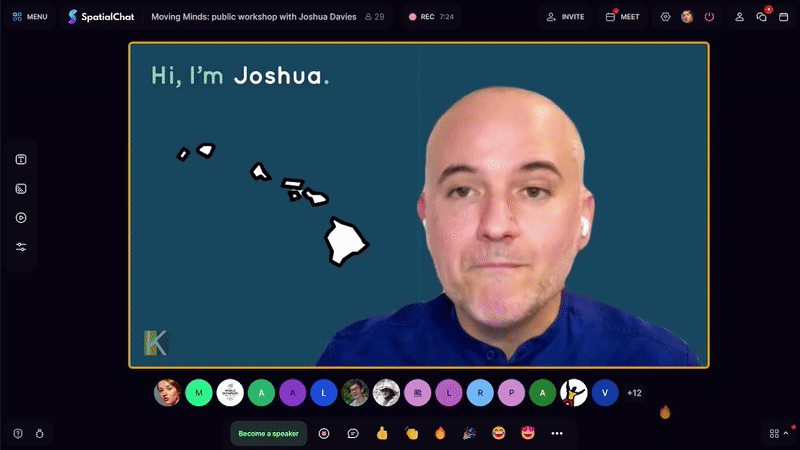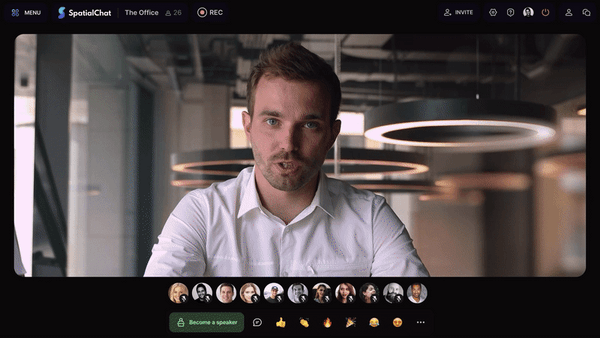Stage room
Stage room is designed for hosting larger groups in a single place.

The room is ideal for presentations, lectures, webinars, and other events that require a speaker to address a large audience:
- With the ability to accommodate up to 10,000 people simultaneously (depending on your SpatialChat plan).
- The stage can host up to 12 speakers, offering an engaging and interactive experience for both the audience and presenters.
- Its interactive functions, such as emoji reactions and real-time chat, offer a unique way to engage audiences.
*but there are limitations
How Stage Room works in SpatialChat
The Stage room in SpatialChat can be adapted for various use cases, whether it’s for online events, educational classes, or virtual offices.
The room is flexible enough to accommodate a range of scenarios, from webinars to town halls.
Let's examine how these functions are applied in particular scenarios.
Online events
- The Stage room shines when it comes to online events like conferences, summits, or virtual fairs. Organizers can utilize this space to deliver keynote speeches, live demos, or presentations, all while keeping the audience engaged through emoji reactions and chat.

The platform allows for customization to align with the event’s branding and thematic elements (Room backgrounds, YouTube video embed, etc.)
Online education
For educational settings, the Stage room offers invaluable advantages, especially for large-scale classes or graduate meetings.

Remote work
- In a virtual office environment, the Stage room provides an excellent platform for training sessions, company-wide meetings, and more.

The engagement functions, like emoji reactions and chat, help to replicate the interactive nature of physical office meetings.
If you have questions or problems with a feature, please visit the Help Center.